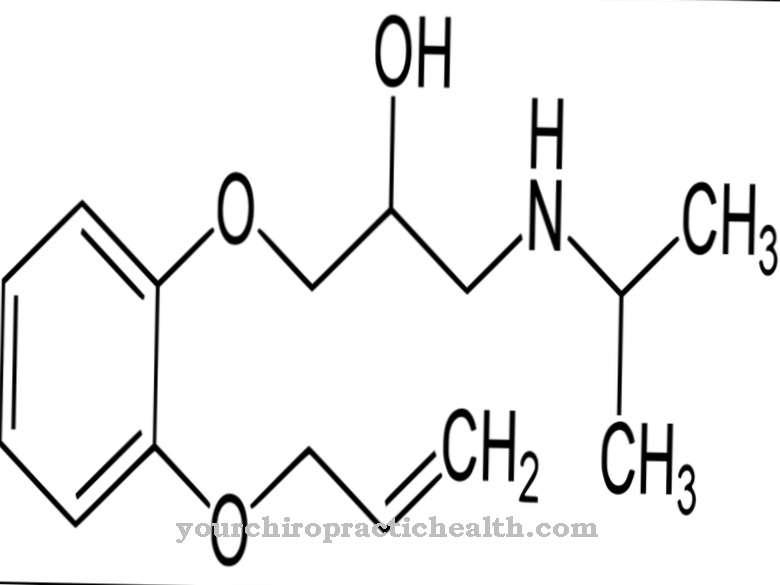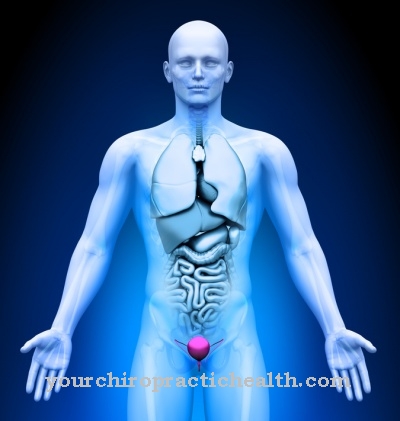The active substance Terbinafine is used to treat fungal diseases. The remedy can be used both locally and systemically.
What is terbinafine?

Terbinafine is an allylamine derivative that is one of the antifungal agents. The antifungal agent is mainly used to treat athlete's foot (tinea pedis) and nail fungus (onychomycosis). It is suitable for local (topical) treatment in the form of creams, but can also be used systemically with tablets. Because of its chemical structure, terbinafine belongs to the group of allylamines.
Terbinafine was developed by the Swiss pharmaceutical company Novartis. The antifungal agent was launched in Europe in 1991. The USA joined in 1996. In Germany, it is now also possible to administer several generic drugs that contain terbinafine.
Pharmacological effect
Fungi, which can cause disease in humans, are made up of individual cells. A cell is the smallest independent unit of all life forms. For the targeted treatment of fungal diseases, medicine uses the differences between the various forms of life in order to effectively combat the fungal cells. However, since the cell differences to humans are not always very pronounced, numerous antimycotics are directed against the cell membrane. This has a different structure in fungi and humans.
The membrane of humans and animals is mainly composed of lipids such as cholesterol. Cholesterol gives the human cell membrane flexibility, which means that it can withstand environmental influences. In mushrooms, this function is taken over by ergosterol, a substance that is chemically similar to cholesterol. However, there are some crucial differences in structure.
Terbinafine can slow down the effect of ergosterol. The drug inhibits the important enzyme squalene epoxidase, which counteracts the build-up of the fungal cell wall. In addition, the starting material squalene accumulates within the fungal tissue. As a result, most of the mushrooms die.
Terbinafine develops its fungicidal effect even in low concentrations on molds, skin fungi and some dimorphic fungi. Yeasts are also hindered or killed in their growth by the antimycotic, depending on the type of yeast fungus.
The duration of action of terbinafine is considered to be long-lasting. The absorption of the substance in the intestine is estimated to be good. However, parts of the active ingredient are rapidly broken down in the liver. This means that only 50 percent of the dose gets into the bloodstream. Terbinafine reached its highest level there after about 90 minutes. Due to its fat solubility, the antifungal agent can easily reach the skin and nails. Around 30 hours after it was taken, around 50 percent of the terbinafin left the organism. The elimination of the degradation products takes place via urine and stool.
Medical application & use
The most important areas of application for terbinafine are fungal skin infections caused by dermatophytes such as athlete's foot or nail fungus. Furthermore, the antimycotic can be administered against candidoses (yeast infections), bran fungus and against the fungus Microsporum canis. This is common in the animal kingdom. It is not uncommon for it to be transmitted from cats to children.
In addition to its external administration, terbinafine is also used internally through tablets in the case of onychomycoses (fungal infections on toenails and fingernails).Terbinafine is administered externally in the form of gels, sprays or one-percent creams. These are applied to the areas of the body to be treated once or twice a day. Depending on the type of fungal infection, the duration of therapy is one to two weeks.
Internal administration through tablets containing 250 milligrams of terbinafine takes place if the patient suffers from severe nail or skin fungal infections. The tablets are taken once a day, independently of meals, with a glass of water. It is recommended to always take the tablets at the same time of day.
The duration of the terbinafine application depends on the severity of the disease. While it usually takes four to six weeks for skin fungal infections, it can last for up to three months for nail fungus.
Risks & side effects
Around ten percent of all patients suffer from undesirable side effects from therapy with terbinafine. The nature of the side effects depends on the form of the dosage. Local application can lead to allergic reactions on the treated skin areas (redness, itching or burning). In individual cases, the allergy spreads to the affected regions and leads to scatter reactions.
When used internally, side effects such as loss of appetite, bloating, nausea, vomiting, diarrhea, slight abdominal pain, joint pain, muscle pain, rashes on the skin, hives, headaches and taste disorders are possible.
If allergic reactions or irritations occur on the skin during terbinafine therapy, the treatment should be stopped. If a sore throat or a high fever occurs, a doctor must be consulted immediately.
Terbinafine must not be administered internally or externally if the patient is hypersensitive to the drug. In the case of acute or chronic liver disease or alcohol addiction, terbinafine cannot be administered in the form of tablets. The same applies if the kidney function is severely impaired.
Little data are available for use in pregnancy. For this reason, the antifungal agent should only be given after medical advice. Because terbinafine passes into breast milk, its internal and external use should not be used during breastfeeding.












.jpg)



.jpg)










.jpg)
